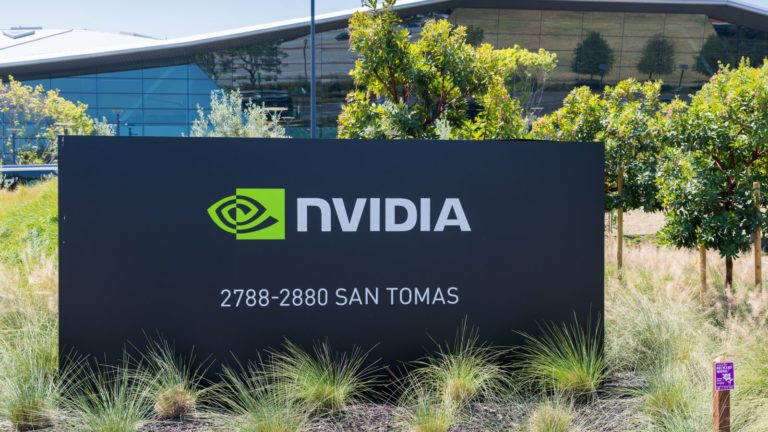Nvidia’s (NASDAQ:NVDA) release of the “Super” version of the GeForce RTX cards is a defensive move. With Advanced Micro Devices (NASDAQ:AMD) also releasing the Radeon XT-series card this month, Nvidia needs to stay ahead. Though it is not a game-changing refresh based on the Turing architecture, it will still contribute to the revenue re-acceleration of NVDA’s graphics division.
Markets are cautious that Nvidia’s latest graphics processing unit (GPU) refresh will re-accelerate sales. But this time seems promising because these cards are solid performers that consumers are willing to buy.
Upon its release, read Nvidia GPU reviews from tech sites. If the experts choose Nvidia’s Super GPU cards over AMD’s, then the rebound in Nvidia stock may hold this time around.
Here are three reasons to buy Nvidia stock.
1) GeForce RTX SUPER Series Launch

The GeForce RTX Super announcement potentially caught AMD off guard.
Nvidia announced on July 2 that it will introduce three “Super” versions of the GeForce RTX. The models are the GeForce® RTX 2060 SUPER™, GeForce RTX 2070 SUPER and GeForce RTX 2080 SUPER. They are priced at $399, $499, and $699, respectively. These are the specifications Nvidia provided:
- GeForce RTX 2060 SUPER GPU – Starting at $399, Available July 9
º Up to 22% faster (average 15%) than RTX 2060
º 8GB GDDR6 – 2GB more than the RTX 2060
º Faster than GTX 1080
º 7+7 TOPs (FP32+INT32) and 57 Tensor TFLOPs
- GeForce RTX 2070 SUPER GPU – Starting at $499, Available July 9
º Up to 24% faster (average 16%) than RTX 2070
º Faster than GTX 1080 Ti
º 9+9 TOPs (FP32+INT32) and 73 Tensor TFLOPs
- GeForce RTX 2080 SUPER GPU – Starting at $699, Available July 23
º Memory speed cranked up to 15.5Gbps
º Faster than TITAN Xp
º 11+11 TOPs (FP32+INT32) and 89 Tensor TFLOPs
Similarly, AMD will launch the Radeon RX 5700 XT GPU this month at a cost of $449, while the 5700 is set to be priced at $379. AMD’s less expensive cards could put some pressure on Nvidia.
Gamers could choose cost savings in return for cards that under-perform the equivalent Nvidia cards. If there are more casual gamers than enthusiasts, AMD could take market share and hurt Nvidia’s profit margin. Conversely, Nvidia may offer better performance relative to price, which would help drive GPU sales higher. The profit margin will increase, especially after Nvidia worked down its inventory of the older generation of cards.
Nvidia’s Super GPUs
Early reviews of the 2060 Super suggest that the card is on par with the original RTX 2070. And the 2070 Super is only 5%-to-9% slower than the original RTX 2080. More impressive is that the RTX 2070 Super gives 1080 Ti-level performance for just $500. Nvidia effectively nullified any reasons for consumers to buy an AMD Vega or Radeon VII with this $500 card.
Nvidia’s pre-emptive strike against AMD’s GPU launch is a brilliant move. AMD is already taking market share from Intel (NASDAQ:INTC) in the CPU space but continues to struggle when going head-to-head against Nvidia.
2) Manageable Risks Ahead for NVDA Stock

Nvidia stock fell alongside gaming stocks as video game sales waned, but the slowdown in game sales is manageable. The gaming sector faced a slowdown in sales, specifically with Activision Blizzard (NASDAQ:ATVI) and Electronic Arts (NASDAQ:EA). Both firms reported weak quarterly results and forecast slower sales earlier this year.
Yet the drop in sales for big game titles is company-specific. The product pricing is easy to fix. Consumers are unwilling to pay more for the same game year after year. EA and Activision need to limit in-app sales to win back its fans.
Video game digital distribution platform Steam has yearly summer sales deals that will attract bargain-hunting gamers. These gamers who buy older titles may decide to upgrade their PC system with the latest mainstream Nvidia card. Even if they opt for previous generation GPUs, both Nvidia and AMD stand to benefit.
3) Valuation of Nvidia Stock

Click to Enlarge At a recent price of $160, NVDA stock is inexpensive at 22 times forward earnings. 28 analysts who cover Nvidia stock think the stock has potential gains ahead with an average price target of $183. The 15.2% potential upside is a modest and reasonable expectation.
Nvidia’s non-GAAP operating income peaked in the first quarter of 2019. Still, it may have bottomed out recently after it drew down inventory and refreshed its GPU product line.
A pessimistic investor may forecast revenue growth lagging this year but rebounding back to the 20% range between FY 2022 – FY 2024. In this scenario, a five-year DCF Growth Exit Model suggests the stock already trades close to fair value.
As of this writing, Chris Lau did not hold a position in any of the aforementioned securities.
